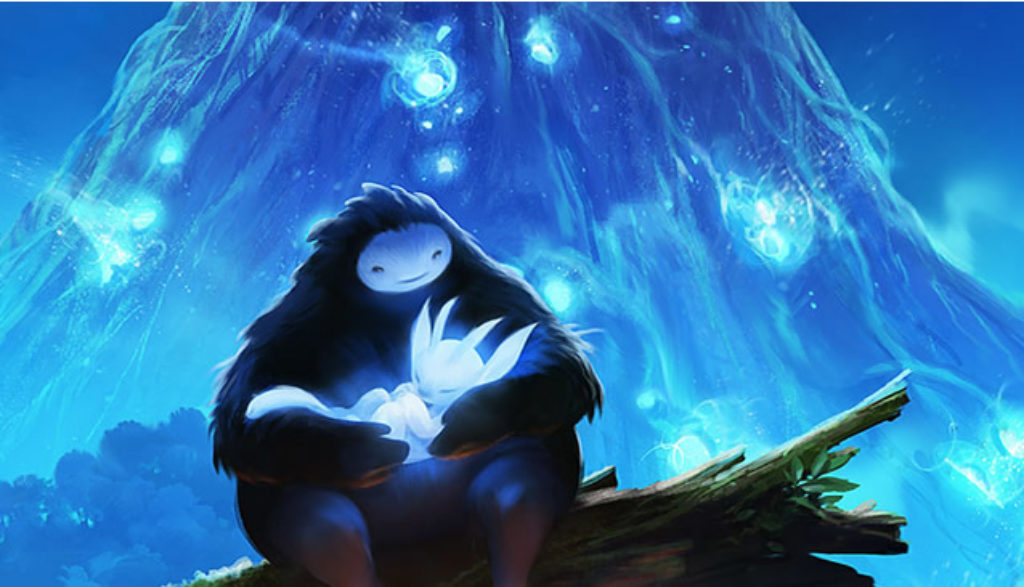
The downloadable PC and Xbox One game Ori and the Blind Forest has a unique feel about it, to be sure. Within the first few minutes of play, you notice that the lavish colors, shifting pools of light and dark, animated layers, studied use of orchestral underscore, and emotion carried by the story seem more like things you see and feel at the movie house than the game room.
But this is a game. And pretty tough one at times, too.
A Parent Gained … and Lost
The heartstring-tugging tale takes place in the forest of Nibel, a place of spirits and magical elements, ancestral touchpoints and a giant bird fiend. Ori is actually a glowing little spirit-like critter who, during a storm, is separated from the forest’s enormous (spiritual) tree of life. The little creature floats down as a glowing leaf to the forest floor and is immediately found and drawn into the adoptive embrace of a loving, marshmallowy, um, thingy named Naru.
When that distant Spirit Tree calls out for Ori with a beacon of light, however, it sets a cataclysmic event into motion that soon makes the forest wither. And as the food supply dies, the sacrificial Naru gives her last bit of sustenance to Ori before collapsing and passing away. It’s up to the once again orphaned Ori to find his way back to the Spirit Tree while seeking out the light of three main elements of Nibel—Water, Wind and Warmth—things vital to restoring the land to its natural balance.
Somersaulting Vs. Shooting
Gameplay wise, this is most definitely a danger-filled, obstacle-laden and foe-packed platformer that demands a quick trigger finger. But that trigger-pulling isn’t so much about blasting things as it is about orchestrating Ori’s interesting, ever-graceful movements—including flipping, wall-jumping, ground stomping, swimming, climbing and dashing.
The key is combining all these incrementally improving abilities and overcoming the most impossible-looking pathways with perfect pinpoint timing. Thus, failing, dying and being reborn at an earlier save point is an inevitable certainty.
As for those many attacking enemies, you’ll find spiders that spit lava bombs, crawling creatures that break up into multiple exploding attackers, and monkey-like predators that bounce around with rubber ball quickness. But Ori’s main form of defense/attack isn’t a gun blast as much as it is a scattered barrage of fiery homing projectiles tossed out by a floating companion named Sein, a friend Ori finds during his travels. Ori can also, among other things, stomp on foes, catapult their own projectiles back at them, or even send them flying by breaking into a mad dash.
The Spiritual Way of This World
Along the way, you’ll find tons of exploring, puzzle solving and discovery to be done in the winding wood pathways and underground caves. You’ll gain energy by restoring life shards, discover keystones that open mysterious spirit gates and unearth mapstones that reveal the many winding paths to take. And it all works together in an effort to turn back the forest’s current age of decay and restore the land and its inhabitants to the way of spiritual light and happiness.
That gives the game, of course, a steady sense of Eastern philosophy and spirituality. “The light of the Spirit Tree lives in all of us,” the game tells us. “He is the reason we’re alive, he’s the reason we grow.”

After spending more than two decades touring, directing, writing and producing for Christian theater and radio (most recently for Adventures in Odyssey, which he still contributes to), Bob joined the Plugged In staff to help us focus more heavily on video games. He is also one of our primary movie reviewers.